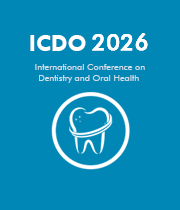Oral Diagnosis
Oral diagnosis is an important component in the practice of dentistry and it contributes significantly to the overall treatment process for optimal oral health. Oral diagnosis is a way of identifying disease at its earliest stage and it serves as the basis for all dental treatment plans. Oral diagnosis involves taking a thorough medical history, doing a physical examination through use of special diagnostic tools, and ordering and interpreting other diagnostic results. Furthermore, dental professionals have to consider the effects of both systemic and local factors on oral diseases and conditions. A thorough medical history is required to detect any medical or family history that can be linked to oral health conditions. Physical examination is conducted and sometimes microscopic examination is done to aid in identification of disease processes at the cellular level. Special diagnostic tools such as X-rays, patho-morphologic lab tests, and other radiographic procedures could also be used to detect pathogenic bacteria in the mouth and to monitor the metabolic activities in the oral environment. Treatment decisions are based on the findings of the oral diagnosis. The aim of the treatment is to restore, maintain, or improve the patient’s overall health. The treatment plan could include functional, esthetic, and preventive interventions. Oral diagnosis is the cornerstone of all dental procedures and it enables the clinician to maintain the patient’s oral health in the best possible conditions. It is important for practitioners to continue updating their skill and knowledge in oral diagnosis to adhere with the current standard of care. The accurate diagnosis of oral health will reduce the risks of complications during treatment and it will also help in providing an optimal outcome for the patient.

David Geoffrey Gillam
Queen Mary University of London, United Kingdom
Christopher Turner
Spacemark Dental, United Kingdom




Title : Evaluating hygienist follow up for head and neck oncology patients in secondary care: Results from a two cycle audit
Peter Basta, Newcastle Dental Hospital, United Kingdom
Title : Atypical facial pain unravelled
Christopher Turner, Spacemark Dental, United Kingdom
Title : New treatment of temporomandibular disorder through muscle balance and muscle regeneration by activation of quiescent muscle stem cells( satellite cells) with mitochondrial dynamics
Ki Ji Lee, National Reserach Foundation & Busan Medical University, Korea, Republic of
Title : Cutaneous, Cranial, skeletal and dental defects in patients with Goltz syndrome
Ali Al Kaissi, National Ilizarov Medical Research Center for Traumatology and Orthopaedics, Russian Federation
Title : The nature and management of dental erosion in patients with bulimia nervosa
Maya Fahy, The Royal Victoria, School of Dentistry, United Kingdom
Title : A systematic review on the early detection of oral cancer using artificial intelligence and electronic tongue technology
Maryam, Kardan Dental Clinic, Iran (Islamic Republic of)